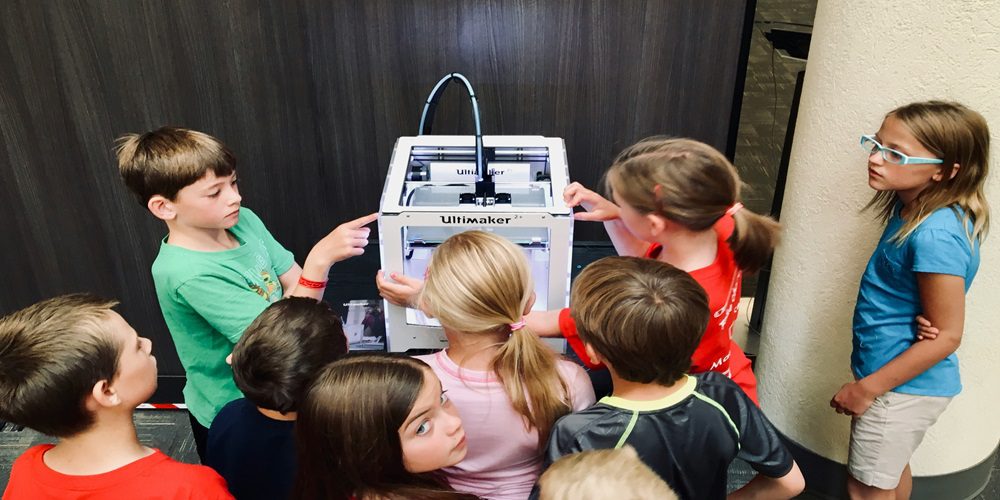Welcome to the future of education! In today’s rapidly advancing world, technology has transformed every aspect of our lives – and now it’s revolutionizing the way we learn. From virtual classrooms to interactive learning apps, educational technology is breaking down barriers and opening up a world of possibilities for students and educators alike. Are traditional chalkboards becoming a thing of the past? Join us as we embark on an exciting journey exploring the incredible benefits that await in this brave new era where innovation meets education. So buckle up, because the future is here!
Introduction to Educational Technology
Educational technology, or EdTech, is a rapidly growing field that has revolutionized the way we learn and teach. It encompasses the use of digital tools and resources in education, from traditional classroom settings to online learning platforms. With advancements in technology constantly changing the landscape of education, it is crucial for educators and learners alike to understand the benefits of incorporating EdTech into their practices.
The first recorded use of educational technology dates back to 380 BC when Plato discussed the use of external symbols such as writing on wax tablets in his Academy. Fast forward to the 21st century, educational technology has evolved exponentially with the development and widespread availability of computers, internet access, and mobile devices. Today, students can access information at their fingertips from anywhere in the world through various educational applications and online platforms.
History and Evolution of Educational Technology
The history of educational technology can be traced back to the 19th century when Thomas Edison invented the first phonograph, which opened up new possibilities for audio-based learning. In the early 20th century, film projectors and radio broadcasting were used in classrooms to enhance traditional teaching methods.
However, it was not until the mid-1950s that digital computers entered the scene and changed the landscape of education forever. With these machines came interactive learning programs, such as PLATO (Programmed Logic for Automatic Teaching Operations), which allowed students to learn at their own pace and receive instant feedback.
In the 1960s and 70s, video cassette recorders (VCR) became popular in educational settings as they provided a more visually stimulating way of delivering content. This was followed by personal computers in the 1980s, bringing forth a new era of technological advancement in education. Educational software packages like ‘Oregon Trail’ and ‘Math Blaster’ gained popularity among students and teachers alike.
The internet boom of the late 1990s saw an explosion in virtual learning opportunities. Web-based courses offered distance learning opportunities, making education accessible to people across geographical barriers. The use of multimedia such as videos, animations, and simulations further enhanced online learning experiences.
In recent years, mobile devices have revolutionized educational technology with their ability to provide anytime, anywhere access to information. Mobile apps for language learning, science experiments, and subject-specific games have become popular tools for engaging students inside and outside the classroom.
Moreover, advancements in technology have also led to adaptive learning systems that personalize instruction based on each student’s individual needs and progress. This has proven beneficial in improving academic performance and providing equal opportunities for all learners.
With each passing year, new technologies emerge offering innovative ways of delivering content through augmented reality (AR), virtual reality (VR), artificial intelligence (AI), gamification techniques – just to name a few. These developments have led to the creation of virtual classrooms, online tutoring, and massive open online courses (MOOCs), making education more accessible and engaging for learners worldwide.
Benefits of Using Technology in Education
Technology has become an integral part of our daily lives, revolutionizing the way we learn and communicate. In the field of education, technology has brought about numerous benefits, making learning more engaging, efficient and accessible. Let’s explore some of the key advantages of using technology in education.
1. Improved Engagement: Traditional teaching methods often involve a one-sided approach, where students are passive recipients of information. However, with the use of educational technology such as interactive whiteboards, online simulations and virtual reality tools, students can actively participate in their learning process. This increased engagement not only makes learning more fun but also enhances retention and understanding.
2. Enhanced Collaboration: Technology allows for seamless collaboration between teachers and students, as well as among peers. With cloud-based platforms like Google Drive or Microsoft Teams, students can easily share files and work on group projects together from anywhere in the world. This promotes teamwork skills and prepares students for future professional settings where virtual communication is becoming increasingly common.
3. Personalized Learning: Every student learns differently at their own pace. Technology offers a variety of educational tools that can adapt to individual needs and provide a personalized learning experience for each student. From intelligent tutoring systems to online assessments that adjust difficulty levels based on performance, technology enables teachers to cater to the unique needs of every student.
4. Access to Information: With technology integrated into education, information is readily available at our fingertips through various devices such as laptops, tablets or smartphones. This eliminates barriers related to time or location constraints when it comes to accessing educational resources. Students can access e-books, online lectures and other academic materials anytime they need them.
5.Expanded Learning Opportunities: Educational technology has opened up new possibilities for learning beyond traditional classroom settings. Gone are the days when geographical distance hindered access to quality education- now remote areas have access to online courses from prestigious universities around the world. Additionally, topical resources such as YouTube tutorials enable students to supplement their learning with visual aids, making difficult concepts more understandable.
Examples of Educational Technology Used in the Classroom
In recent years, there has been a significant increase in the integration of technology into traditional classroom settings. With the rise of educational technology, teachers now have access to a variety of tools and resources that can enhance the learning experience for their students. In this section, we will explore some examples of how educational technology is being used in classrooms all around the world.
1. Interactive Whiteboards: One of the most widely used forms of educational technology in classrooms is interactive whiteboards. These devices combine traditional whiteboard surfaces with state-of-the-art digital technologies to create an interactive learning experience for students. Teachers can use these boards to display multimedia content such as videos, images, and websites that engage and motivate learners.
2. Educational Apps: With the increasing popularity of smartphones and tablets, educational apps have become an essential part of modern-day classrooms. These apps cover a wide range of subjects from math and science to languages and art. The gamified nature of many educational apps makes them particularly appealing to young learners who often struggle with conventional teaching methods.
3. Virtual Reality (VR): VR technology has revolutionized education by providing students with immersive learning experiences that were previously unimaginable. Through VR headsets, students can explore places they may not otherwise have access to such as outer space or ancient civilizations. This enables them to gain a deeper understanding of complex concepts and brings virtual field trips into the classroom.
4. Learning Management Systems (LMS): An LMS is a software platform designed specifically for schools and universities to deliver online courses and manage student data in one central location. These systems provide teachers with tools such as quizzes, discussions forums, gradebooks, and announcements that make managing coursework easier while also giving students access to course materials anytime, anywhere.
5.Virtual Classroom Platforms: As distance learning becomes more prevalent due to global events such as pandemics or natural disasters, virtual classroom platforms like Zoom or Google Meet play an increasingly important role in education. These platforms enable teachers to conduct live lessons with students remotely, allowing for face-to-face interaction and real-time collaboration.
How Educational Technology is Impacting Learning and Teaching
The advancement of technology has had a significant impact on various aspects of our lives, including education. With the rise of educational technology, or EdTech, traditional methods of learning and teaching have been revolutionized. In this section, we will explore how educational technology is shaping the future of education and how it is impacting both students and teachers.
Personalization of Learning
One of the most significant benefits of educational technology is its ability to personalize learning experiences for students. With the help of various tools such as online learning platforms, virtual reality simulations, and adaptive software, educators are now able to cater to each student’s individual needs and learning styles. This allows for a more tailored approach to teaching, ensuring that students are engaged and can learn at their own pace.
Enhanced Collaboration
Educational technology has also brought about an increase in collaboration among students. Online discussion forums, video conferencing tools, and collaborative document editing software have made it easier for students to work together on projects regardless of their physical location. This not only improves social skills but also helps prepare students for the collaborative nature of today’s workforce.
Accessible Learning Opportunities
Another notable impact of educational technology is its ability to provide accessible learning opportunities. With digital resources like e-books, interactive tutorials, and online courses available anytime and anywhere with internet access, geographical barriers no longer limit access to education. This means that students who live in remote areas or those with physical disabilities can still receive high-quality education.
Engaging Instructional Methods
EdTech has also made it possible for educators to use more interactive and engaging instructional methods in the classroom. Instead of relying solely on traditional lectures or textbooks, teachers can now incorporate multimedia elements like videos, games and simulations into their lessons. These methods not only make learning more fun but also aid in retention by catering to different types of learners.
Efficiency in Grading
Technology has also streamlined the grading process for teachers. With the help of online tools and software, educators no longer have to spend hours manually grading papers and assignments. Instead, they can use automated grading systems that provide faster, more accurate results, allowing them to focus on other aspects of teaching.
Real-World Application
EdTech has also made it possible for students to experience real-world application of concepts in a safe and controlled environment. Virtual reality simulations allow students to explore different scenarios that would be challenging or impossible to recreate in a traditional classroom setting. This not only makes learning more engaging but also prepares students for future careers where technology is often used as a training tool.
Challenges and Solutions
While educational technology has numerous benefits, it also comes with its fair share of challenges. One common concern is the reliance on devices and screens, leading to screen time addiction among younger learners. To combat this issue, educators can incorporate offline activities into their lesson plans and encourage proper device usage habits.
Challenges and Controversies Surrounding Educational Technology
As with any rapidly evolving field, there are bound to be challenges and controversies surrounding educational technology. These stem from a variety of factors, including concerns about the impact on students, teachers, and traditional education systems.
One of the main challenges facing educational technology is access and equity. While many schools and institutions have embraced technology in their classrooms, not all students have equal access to it. This can create a digital divide between those who have the resources to access educational technology and those who do not. Without addressing this issue of equity, there is a risk that certain groups or communities may fall behind in terms of learning opportunities.
Another major challenge is the effectiveness of educational technology in terms of improving student outcomes. With so much emphasis being placed on the integration of technology in classrooms, there is debate over whether it actually leads to better learning outcomes for students. Some argue that excessive use of screens and devices can actually hinder critical thinking skills and cause distractions. Additionally, there is concern that relying too heavily on technology may lead to a lack of creativity and problem-solving abilities in students.
In addition to these practical concerns, there are also ethical issues surrounding educational technology. One such controversy revolves around data privacy and security. With the increasing use of digital platforms for learning and data collection, questions arise about who has access to this information and how it could potentially be used without consent or awareness from students or their parents.
Moreover, there are concerns about the potential consequences of artificial intelligence (AI) in education. While AI can enhance personalized learning experiences for students by adapting lessons based on their individual needs, some worry about its role in grading assignments or even replacing human teachers altogether.
Another controversial topic within educational technology is blended learning – a combination of online and traditional classroom teaching methods – particularly regarding how it affects teacher-student interactions. While proponents argue that blended learning allows for more individualized attention from teachers due to smaller class sizes, critics question if these interactions are still meaningful or if personal connections between students and their teachers may be lost.
The Future of Educational Technology: Predictions and Possibilities
The ever-evolving field of educational technology (EdTech) has revolutionized the way we learn and teach in the 21st century. With the rapid advancements in technology, it is almost impossible to predict where EdTech will take us in the future. However, through current trends and emerging developments, we can make predictions about what the future holds for educational technology.
One prediction is that virtual and augmented reality (VR/AR) will become a staple in classrooms around the world. VR/AR allows students to have immersive learning experiences, making abstract concepts more tangible and engaging. In addition, this technology can also bridge geographical barriers by creating virtual field trips or connecting students with experts from different parts of the world.
Another possibility is that artificial intelligence (AI) will continue to enhance personalized learning experiences for students. AI-powered adaptive learning platforms are already being used to provide tailored learning paths for individual students based on their strengths, weaknesses, and learning styles. With further developments in AI, these platforms could become even more sophisticated and effective at catering to each learner’s unique needs.
Big data analytics is also expected to play a significant role in education in the coming years. By collecting and analyzing vast amounts of student data from various sources such as online quizzes, assignments, and class participation, educators can gain insights into their students’ progress and make informed decisions about their teaching methods. This can help identify areas where students may be struggling and allow teachers to intervene with targeted support.
Furthermore, gamification is likely to have a greater impact on education in the future. Gamification involves using game elements such as levels, points systems, challenges, and rewards to motivate students and make learning more enjoyable. As gaming continues to be integrated into education through educational games and simulations, it has the potential to improve student engagement and academic performance.
Additionally, as distance learning becomes increasingly popular due to recent global events like COVID-19 pandemic disruptions or natural disasters like hurricanes and earthquakes, online learning will continue to grow. This trend may lead to the development of more advanced virtual classrooms with improved collaboration tools, making remote learning even more effective.
Conclusion
As we continue to advance and evolve in this digital era, it is clear that educational technology will play a vital role in shaping the future of education. The benefits of edtech are undeniable – from increasing engagement and collaboration among students, to providing personalized learning experiences tailored to individual needs. With consistent integration and adaptation, it has the potential to revolutionize the way we learn and teach. Let us embrace these technological advancements and use them as tools to create a more efficient, effective, and inclusive educational system for generations to come.



































